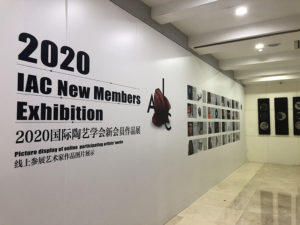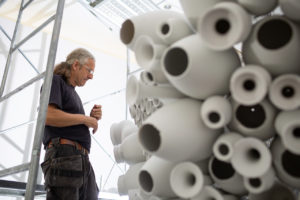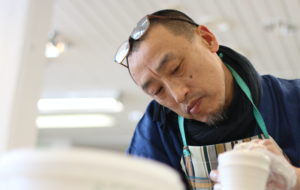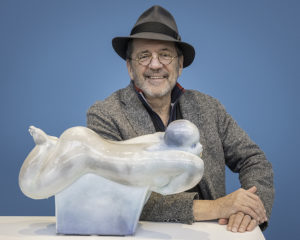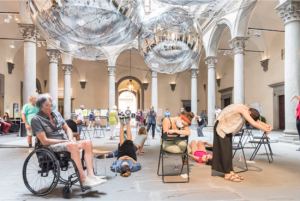Janet DeBoos – SEMINAR
|
Towards a Socially-Engaged Practice… New trends in international ceramics is a vast subject – and it is inextricably linked to both local and international conditions and fashions. However, for the first time in many years, we are all linked through a worldwide event – the Covid19 pandemic – and it has changed not only our behaviour, but also our values, and as a direct result, the work we engage in. Some years before the pandemic was declared, there had been a noticeable surge of interest in pottery – not just ceramics, but the making of things out of clay that we could use in domestic or public settings, things that we could eat off, and share food from. There was an even more fundamental interest in the very material itself: clay. It was predominantly a younger generation of newcomers who became passionately interested in clay, and pottery. There were of course many well-established potters who already catered to this now growing market – particularly the restaurant trade – but the new influx of practitioners brought something else, something we had not seen in such numbers since the 1960s. |
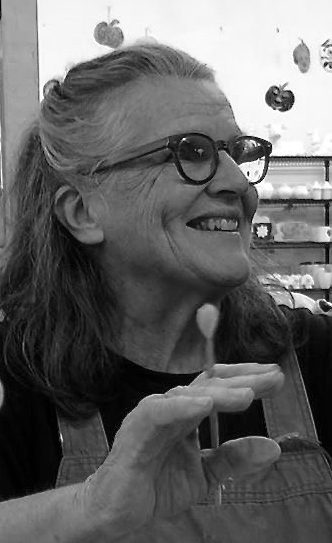 Janet DeBoos |
||
|
They brought a desire for ‘meaning’, and ‘local’, and a direct ‘response to material’ to what had become a field of ceramics ‘stars’ and high-profile makers. The skill of the established ceramic artists was not something that most of the newcomers aspired to. It was more their immersion in the material, their capacity to ‘make meaning’ through making that seemed so desirable. |
It is hardly surprising, in a world that has become increasingly virtual, with experience mediated by the digital, that a hunger for ‘authentic experience’ should grow. It is not the first time that something like this had happened, where a younger generation broke with the past, rejected the ‘standards’ of the teachers, and produced works seen by many as ‘beginners work’, ‘sloppy craft’ and ‘amateur-ish’. |
||
|
|
|||
|
PARALLELS BETWEEN THEN AND NOW I can clearly remember the start of my involvement in ceramics being through my mother taking pottery classes at the local evening college. She became a ‘serious amateur’, like many others of her generation. These amateurs (and more about that word shortly) were driven by many of the same impulses that have driven this current revival of interest. Back then it was the influx of labour-saving devices in the home, the introduction of services or readymades (replacing various tasks once done through frugal but satisfying handwork at home – e.g. sewing clothes, repairing shoes, making small furniture etc.) Today, with the digital revolution, all this has been magnified, but the human hunger to ‘make things’ remains essentially the same. To draw further parallels between then and now, we have to look at major world events, and the impact that they have had on society. In the 1960s, the Vietnam War and conscription, plus booming post-WW2 economies and business-driven decision making was instrumental in the desire of a younger generation who rejected the prescribed ‘good consumer life’ of their parents and sought alternatives. The West Coast of the United States became a hotbed of experiments in living. There was a rejection of consumerism – and the making of things that one needed for living… Doing things with your hands became highly desirable – even if it was ‘amateur’ (THAT word again!)… The ‘handmade house’ became an ideal, books on how to do it were published in their thousands, and pottery classes flourished. |
As well as those who followed a more conventional path in pottery, there were experiments in clay: questioning the authority of the skilled artisan, adopting a more expressive and direct engagement with material. There were also highly visible and influential people like Peter Voulkos, who adopted an Abstract Expressionist approach to clay handling, influenced by many of the action painters in this field. But back to today, where we are still in the middle of a worldwide pandemic that has completely upended how we conduct our lives. From a time of globalism with freely undertaken international travel, we are suddenly faced with lockdowns and borders, and a greatly renewed engagement with the local. This has coincided with that previously discussed resurgence of interest in pottery and is leading to a new international/local social engagement through online learning – on YouTube mainly – combined with local arrangements for firing and finishing works. Social groups have formed online (mainly Facebook) for beginners to discuss technical and aesthetic matters – often free from any professional input – but sometimes at quite a high technical level. There are also many private classes starting (online and with reduced numbers in studios) at the same time as institutions struggle to stay afloat without on-campus students. If we see the ceramics world as a triangle, with the famous names, the established artists at the peak, then the base on which that triangle rests has just got immeasurably broader. This change in the ‘shape’ of ceramics education and engagement will be with us for some time, as will the pandemic. |
||
|
|
|||
|
EXAMPLES OF ‘AMATEUR’ PRACTIONERS To illustrate these changes, I would like to talk about a few Australian practitioners who I feel are excellent examples now of future directions in ceramics – not only in Australia but as models of similar developments in other countries. Just as in the 1960s and 70s, it is an exciting time where rules are being broken, ‘amateurs’* are admired, and social values are taking precedence over the Art Object. *Just a short comment here regarding the ‘Amateur’ before I go on. It is a French word that means ‘lover of’- that is, someone who does something for the love of it – for the meaning it has for them, personally. |
It may be making something as a transactional object – perhaps a present for a birthday, something to express love or affection, or perhaps just to make and offer a cup of tea in, share a moment with a friend or family member, using something that you have made, and have pride in. So rather than an expression of contempt, I regard ‘amateur’ as extremely desirable. In some respects we are all amateurs. We do what we do for the love of it. Its just that some of us do it to the level of a professional practice, and make and sell (hopefully) works that satisfy a discerning art audience, as well as satisfying us at the more personal level. |
||
|
|
|||
|
1. VIPOO SRIVILASA Srivilasa is an Australian-Thai artist and has had a socially engaged perspective for much of his professional career. He has used performance/audience engagement as part of his practice for many years and is always asking participants to consider behaviours and feelings that they may not normally give the attention they deserve. Much of his practice is grounded in Buddhism, and in developing a sense of being in the moment, becoming fully aware of that state. |
He has also been at the heart of fundraising activities recently, rallying the international – and particularly the Australian – clay community to support their peers who lost studios and houses in the recent terrible bushfires in Australia, and who, due to the pandemic have been unable to pursue income-earning activities in their field. These events were conducted online, with artists donating time in the form of mentoring/ instructing and donating works for auction and selling online. They have raised thousands of dollars for relief and rebuilding efforts. |
||
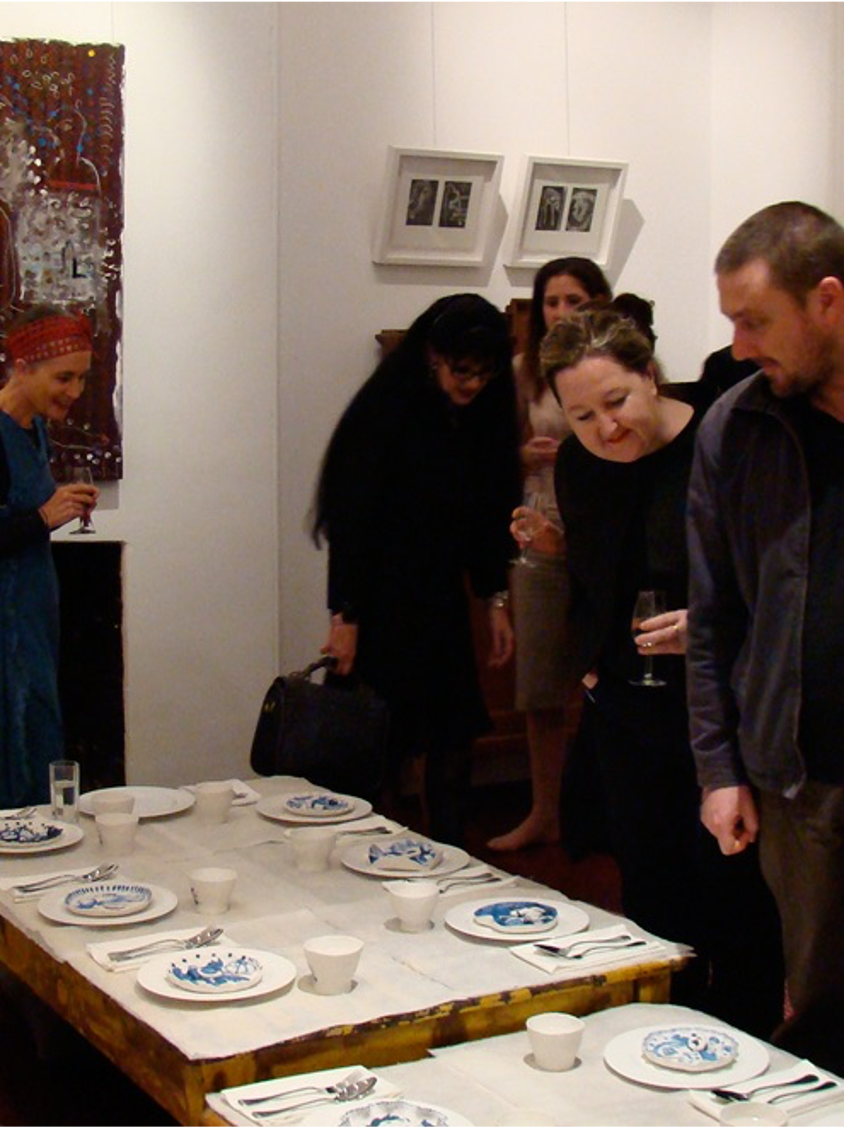 “The Roop-Rote-Ruang (Taste-Touch-Tell) Project” by Vipoo Srivilasa |
His earlier work often took the form of a limited number of ‘dinner parties’ where participants (who paid for their place) not only enjoyed the meal (also cooked by Srivilasa) but ate off dinnerware made by the artist. The Roop-Rote-Ruang (Taste-Touch-Tell) Project is a series of dinner parties, hosted by the artist, at various private residences in Sydney. At the dinner parties, Srivilasa presents a new ceramic dinner set (105 pieces) on a coral reef theme. The work unfolds as the meal is consumed. The dinner project emphasises the role of ceramics in the sensory experience, presenting an unfolding story during a four-course home-cooked Thai meal, prepared by the artist. The diner embraced the Buddhist concept of “Ayatana”, the six channels of awareness. Guests’ sight, taste, smell, hearing, touch and mindfulness were all engaged as the ceramic story was revealed. Srivilasa is also interested in creating opportunities for sharing between complete strangers and creating different, social ways of exploring complex ideas of his cross-cultural experience. |
||
|
Vipoo Srivilasa’s interactive Love Lab performance offered participants the chance to reflect on the ingredients that make up their love language and in turn, to finally find out how good or bad love tastes. In Love Lab, participants were invited to complete a short questionnaire about the taste of their ideal love. According to Vipoo, “I used different kinds of crackers as the base because I feel like people have different energy. Though you are a woman, you can have a male energy, not that you’re a tomboy or you’re gay. The second layer was identifying the one you love: same-sex was depicted by eggs because a hen doesn’t need a rooster to lay an egg. The opposite sex was depicted by an avocado because the fruit can change its sex, one day male and the next day female. Any sex was a capsicum because the tree has both male and female vegetables.” |
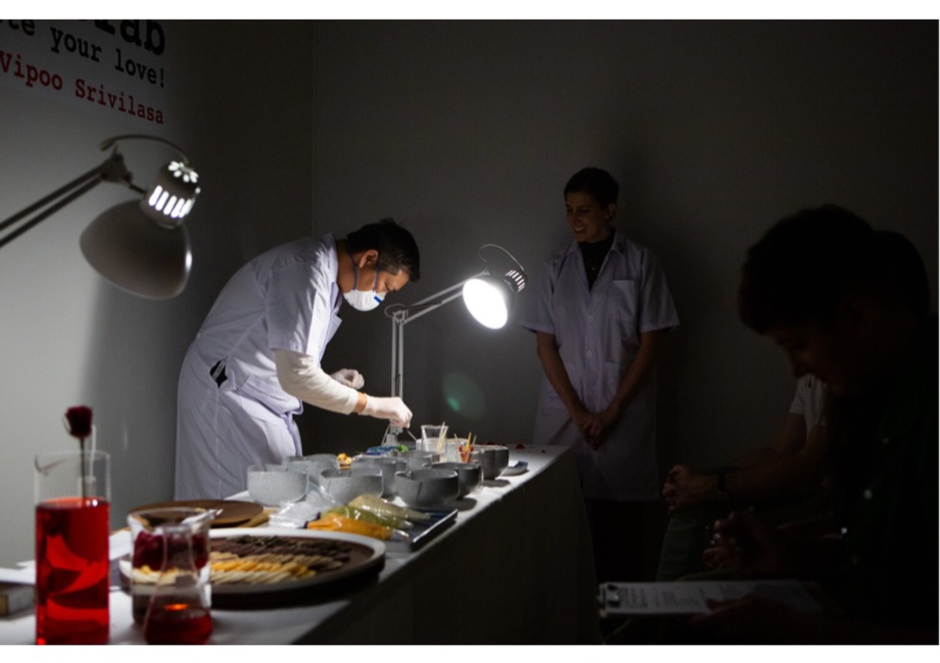 “Love Lab” by Vipoo Srivilasa which has been perfromed at SAC gallery in Bangkok and Craft Victoria in Melbourne.
|
||
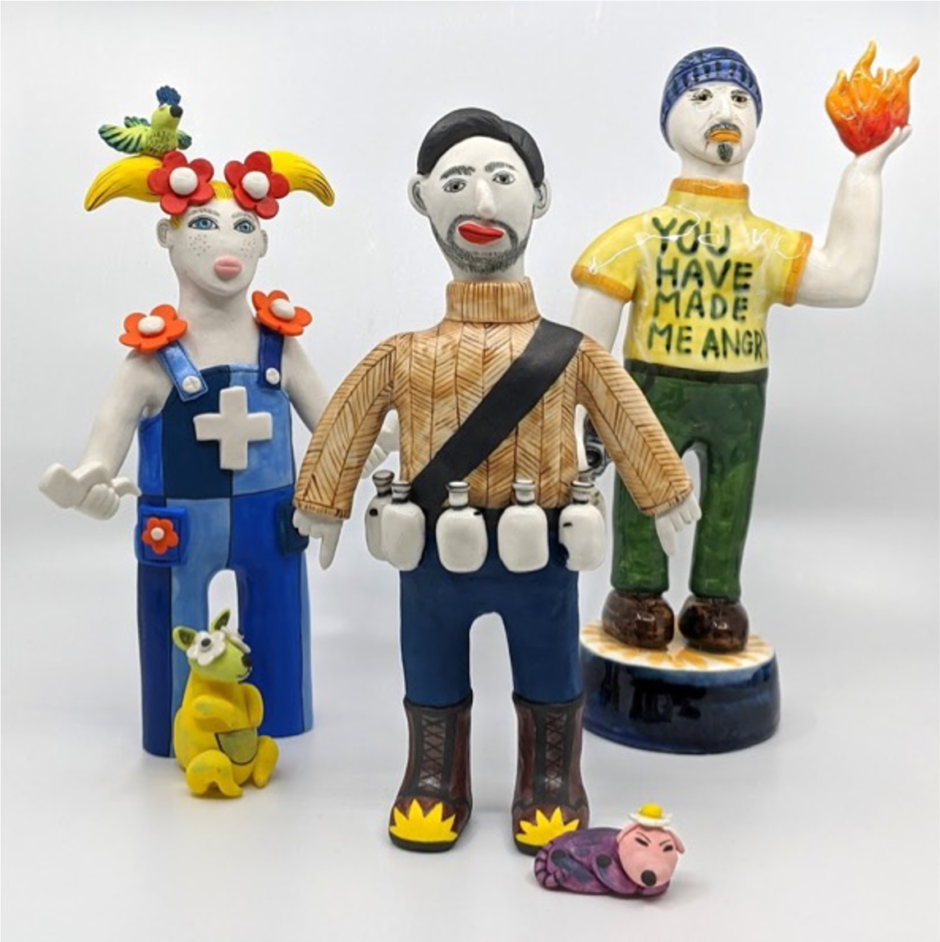 “Covid-19 Superhero 2020” by Vipoo Srivilasa |
|||
|
What does a Covid-19 superhero look like? They had to say what special powers, personality traits and characteristics their superhero needed to adapt, survive, thrive and even beat Covid-19. |
Vipoo then made superheroes inspired by those dreams, and produced a collection of 10 (which will be exhibited in Ballarat at the Regional Gallery post-COVID). ARTIST WEBSITE : https://vipoo.com/ |
||
|
|
|
||
|
2. RAMESH MARIO NITHYENDRAN A Sri-Lankan/Australian artist who uses a very direct and expressive engagement with clay. Nithyhendran has become a ‘star’, but because of his seemingly crude handling of clay – its violent colour and often its subject matter – he is the subject of widely divergent opinion. Extract from the catalogue of a recent exhibition during the Adelaide Biennale: “Sri Lankan-born, Sydney-based artist Ramesh Mario Nithiyendran is leading the recent ‘rediscovery’ of ceramics in Australian contemporary art. He works sculpturally with experimental forms and glazes, and individually crafted plinths. While proceeding from an atheist perspective, Nithiyendran draws upon his Hindu and Christian heritage. Deities including Krishna, Kali and Ganesh, as well as Christian references and self portraits, make frequent appearances in his work. These influences vie for both victory and ruin in the artist’s composite creations, just as the male and female organs present in the work suggest a transgender realm of new possibilities. Through his work Nithiyendran champions the physicality of the art act, claiming that ‘the visceral, technical possibilities and symbolism of clay (as fundamental corporeal matter) make it the perfect material to engage with the politics of sex, gender and organised religion’.” |
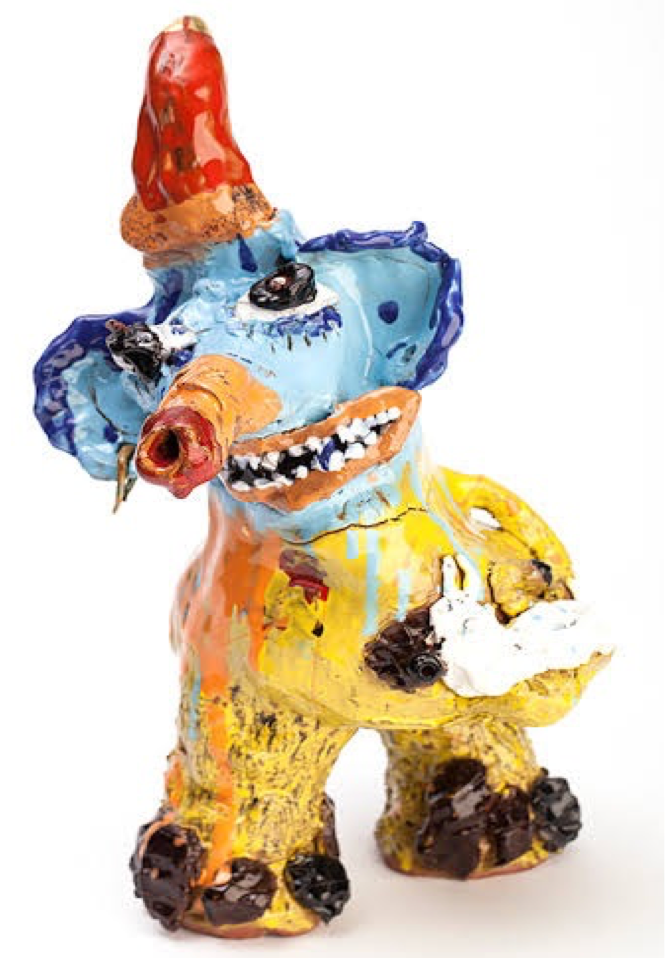 Artwork by Ramesh Mario Nithyendran ARTIST WEBSITE : https://www.ramesh-nithiyendran.com/ |
||
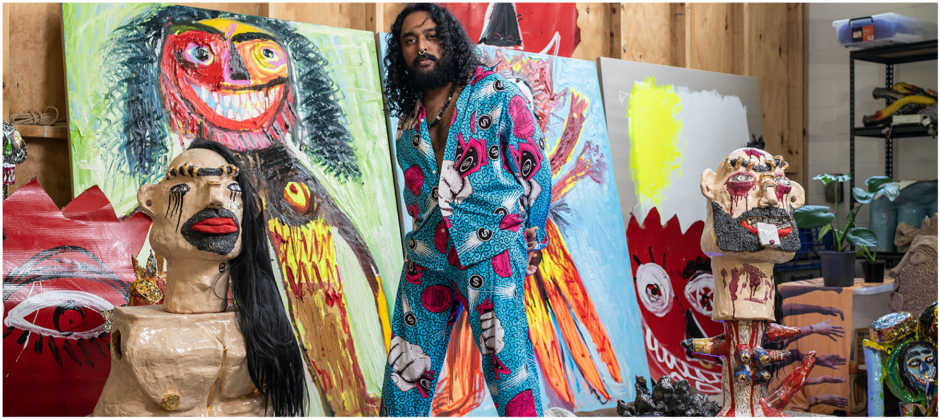 Ramesh Mario Nithyendran in front of his artworks
|
|||
|
3. COMMUNITY (AMATEURS) JANE SAWYER & SLOW CLAY STUDIO: Established for over a decade, Slow Clay has gradually shaped its offerings such that when Covid19 arrived it was prepared to offer various innovative ways for the Centre’s members to keep engaging with clay. From their brochure/website, the basis of their offerings is as follows: “We offer three foundational courses for beginner’s level: Our unique Slow Clay method ™ for teaching the pottery wheel, our established Form & Surface course for teaching hand-building, and our seductive Porcelain Small Objects course for experiencing porcelain. |
Our Slow Clay method ™ for teaching use of the pottery wheel, was developed by centre director and ceramic artist Jane Sawyer and has been taught and refined over thirty years. Based on the Japanese techniques Jane studied as a young apprentice in Japan, the Slow Clay method offers ergonomic best-practice and provides a solid foundation for personal expression and confidence with clay. Sawyer is an exhibiting artist and a member of the International Academy of Ceramics and has served on many professional boards including Craft Victoria and the World Crafts Council, Australia.” STUDIO WEBSITE: https://www.slowclay.com/ |
||
|
|
|
||
|
4. ENVIRONMENTAL : Jane Bamford and the endangered spotted handfish project in the Derwent River in Tasmania (artificial spawning habitats) “The Spotted Handfish (Brachionichthys hirsutus, Lacepede 1804) which only exist in 8 sites in the Derwent River, has been listed as critically endangered on the International Union for the Conservation of Nature (IUCU) red list and the Environmental Protection and Biodiversity Conservation Act (EPBC). |
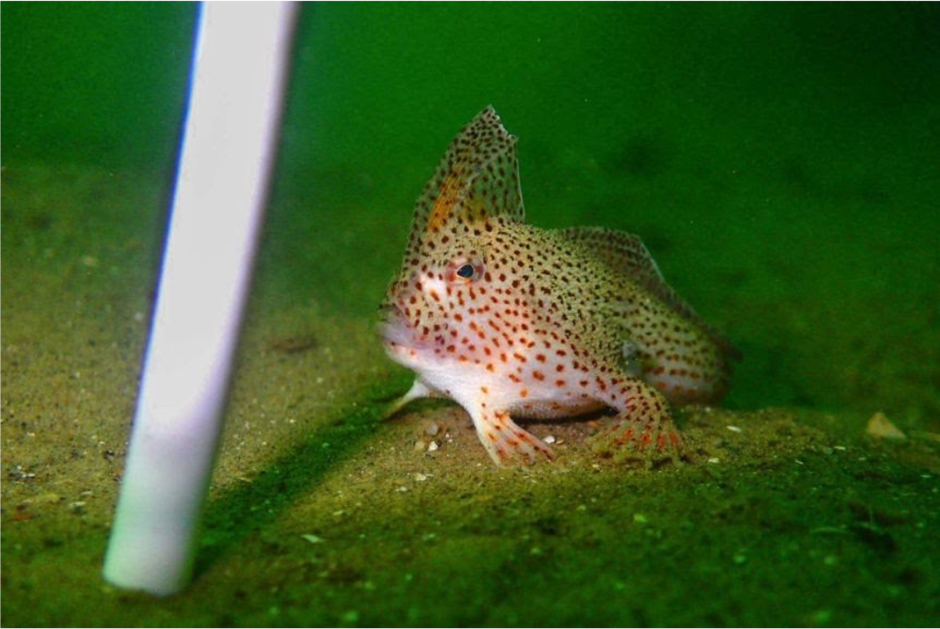 The Spotted Handfish |
||
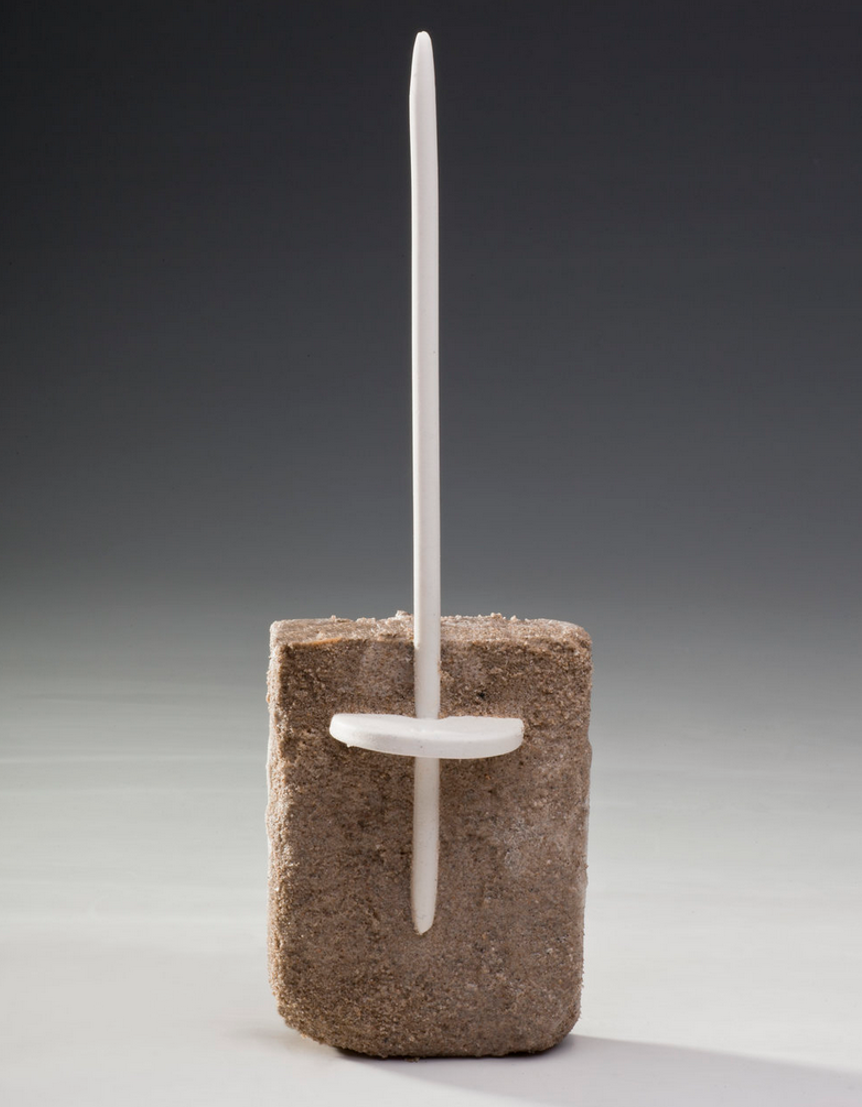 A ceramic artificial spawning habitat designed by Jane Bamford |
Its ongoing battle for survival relies heavily on production and deployment of artificial spawning habitats (ASH). These replace the stalked ascidians used as spawning habitat in the Derwent River that have been depleted by the introduced invasive northern pacific sea star. The CSIRO asked me to design and produce ceramic ASH to replace plastic ASH they currently use. The plastic units, while effective, are a form of pollution and also degrade quickly. I produced 3000 ceramic ASH prior to spawning time in 2018. This project intersects my art practice with current scientific research and practice. The ceramic ASH have been SCUBA deployed into the Derwent River to provide plastic free spawning habitat for this critically endangered fish species.” |
||
|
These four cases each demonstrate different, distinctly relational* practice. By this I mean a practice or professional life that is not narrowly confined to the making of the art object, but rather one where the artist is operating in a broader social milieu, being aware of – on the one hand – the personal and public value of the material (expressive, meditational, environmentally sound, social etc.), and on the other: the capacity of that material to be used by anyone to gain an understanding of, and to give meaning to their life. |
It is the quintessential ‘chameleon art medium’, changing its appearance, catering to all environments and demands by its users, and allowing itself to be used – to play second fiddle to greater community and planetary needs. I see an increase in these ways of using clay as playing a major role in the future of ceramic practice. Janet DeBoos 2020 |
||
|
|||
|
|
|
||
|
|
|
||
Exposition des nouveaux membres de l’AIC 2020 et séminaire
L'exposition 2020 des nouveaux membres de l'AIC s'est tenue en novembre et décembre 2020 au Musée d'art céramique de Beijing Guozhong en Chine.
(Más…)Torbjørn Kvasbø – SEMINAR
Keynote speech by Torbjørn Kvasbø, IAC President 2018-2024 and IAC artist member since 1990.
(Más…)Wan Liya – SEMINAR
Wan Liya is a well-established Chinese ceramicist who is the IAC's Council representative for China for 2020-2026. His work is concerned with the legacy of Chinese ceramic traditions amidst rapid changes in contemporary society.
(Más…)Wayne Higby – Seminar
Wayne Higby is a Professor of Ceramic Art and the Wayne Higby Director and Chief Curator of the Alfred Ceramic Art Museum at Alfred University in New York. His artistic practice is known for its inventive use of Raku earthenware.
(Más…)Claudia Casali – Seminar
Claudia Casali is the Director of the International Museum of Ceramics in Faenza (MIC), Italy. Alongside her work she lectures, curates and collaborates with museums internationally as a jury member for ceramic competitions.
(Más…)

